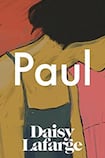
The novel begins with Frances waiting to be picked up by her host, Paul, in a car park. She has arrived from Paris, where she has been studying a medieval French manuscript, and is about to begin volunteering on an organic farm in the Pyrenees. Waiting, being “picked up”, being moved around, Frances is both passive and deeply self-conscious about her passivity, her tendency to be “amenable”, from the start. In this intelligent and subtle novel, an atmosphere both eerie and summery is the backdrop for her disturbing psychological undoing.
In her debut, Daisy Lafarge unsettles brilliantly. The writing is crisp and elegant, the sentences both vivid and precise. There is a timelessness, a sort of folk-horror aspect given by the cycle of local festivals, medieval churches, the nightmarish rural isolation and the way in which Lafarge uses documents, found objects, letters and emails to drip-feed information to the reader. That said, the book also feels part of a modern trend for novels on toxic relationships and broken heterosexuality. There are echoes of Daphne du Maurier, but also of Megan Nolan’s Acts of Desperation.
The first part of the book follows a week at the organic farm, with each chapter named after a day of the week, heading towards a local festival at the weekend when, ominously, a storm is forecast. Lafarge invokes and plays with the tropes of the Gothic: an innocent or passive narrator, a charming but abusive man, and even, at one point, a shock of monstrous rhododendrons.
Lafarge also seems to draw on the spiralling structure of Jean Rhys’s narratives, in which the narrator becomes increasingly lost to the reader as the novel continues. Objectification seems to result in a metaphorical and psychological process of becoming-object: gradually, the narrator seems to depart from herself, to become a body, acting but rarely reacting. In this way, Lafarge is able to create a psychic atmosphere of threat and premonition:
"I see the moment through their eyes. Paul, the older man; me, something else…
I half hear the men exchanging gloomy prognoses that a storm is forecast for the day of the festival. They've been working on adding extra support to the chapiteau.
‘So do you think she’ll hold for the party?’ asks Paul. ‘La tente?’
‘Should do. Unless she has a breakdown.’”
Later, driven by Paul to a lay-by to be picked up by her next host, Frances tell us she wheels her suitcase from one car to the other, “feeling like some item passed between the two men”.
Another man, AB, hangs in the background of the novel. Though at first Lafarge leaves Frances’ relationship with AB hazy, she knows just when to deliver the pieces of the jigsaw. The narrator’s instability is complex and well handled. Told from Frances’ viewpoint, there are disturbing traces of thought emerging and sinking through the surface of the prose. When she first meets Paul, she tells him about herself, and he repeats her biography, shortened, back to her: “I shrug. It occurs to me how much his description sounds like an obituary.”
The possible endings of the book are kept in abeyance throughout, partly through the mainly present-tense narration. Split into three parts, with chapters named for days of the week, an initial crescendo gives way to reflection, and then onwards to a new and disturbing tenor of violence.
There is a shift in tenses: part one is narrated in the present, part two in the past, though part one precedes part two chronologically. The effect, here, is one of a narrator sensing things in immediate, disorientating time, and then being pulled out of that disorientation only to be resubmerged.
Throughout, there is a dramatic irony that is productively frustrating for the reader. Always, we are waiting for the narrator to clock what is happening, to stop going back, but gradually we watch as she becomes more and more mute, sinking into a traumatic passivity.
The spectre of Paul Gauguin haunts the story. Anecdotes and ideas from his Tahitian narrative, Noa Noa (1901), both build up the sense of unease in the character of his fictional namesake, and tap into a nexus of power relations and questions about observation, ethics and performativity.
With an intelligence lightly worn, this is an immersive, maddening, unsettling read.
Seán Hewitt is the author of Tongues of Fire and J M Synge: Nature, Politics, Modernism

